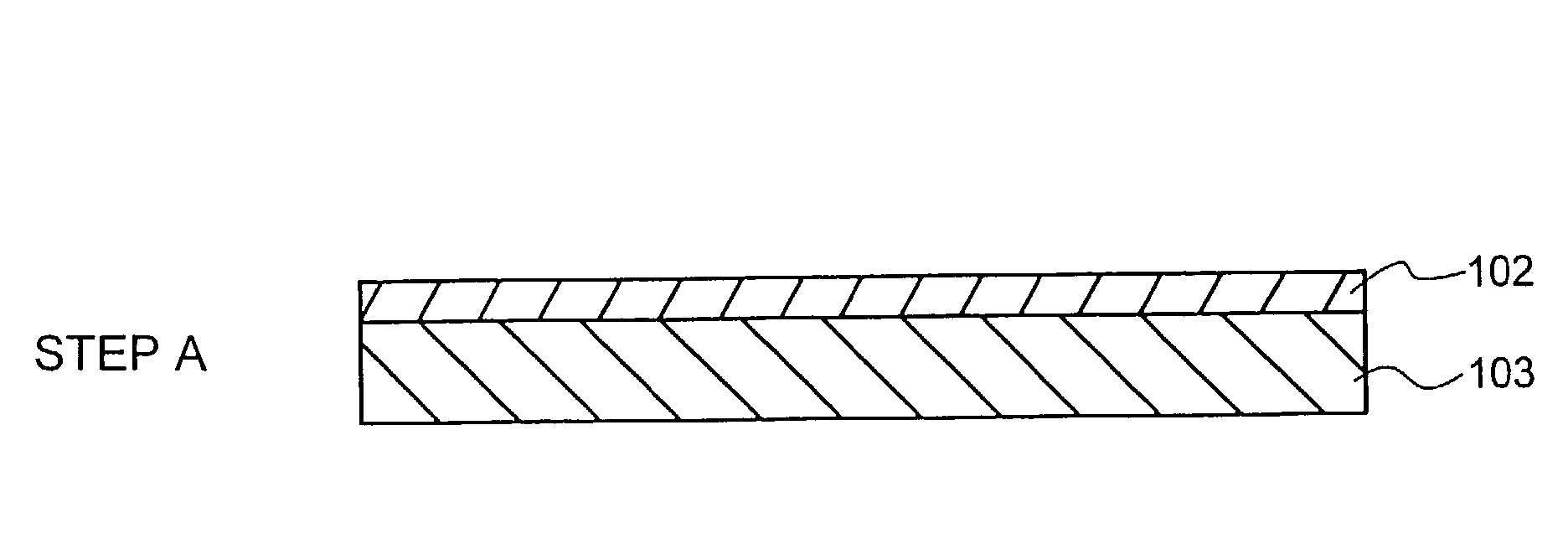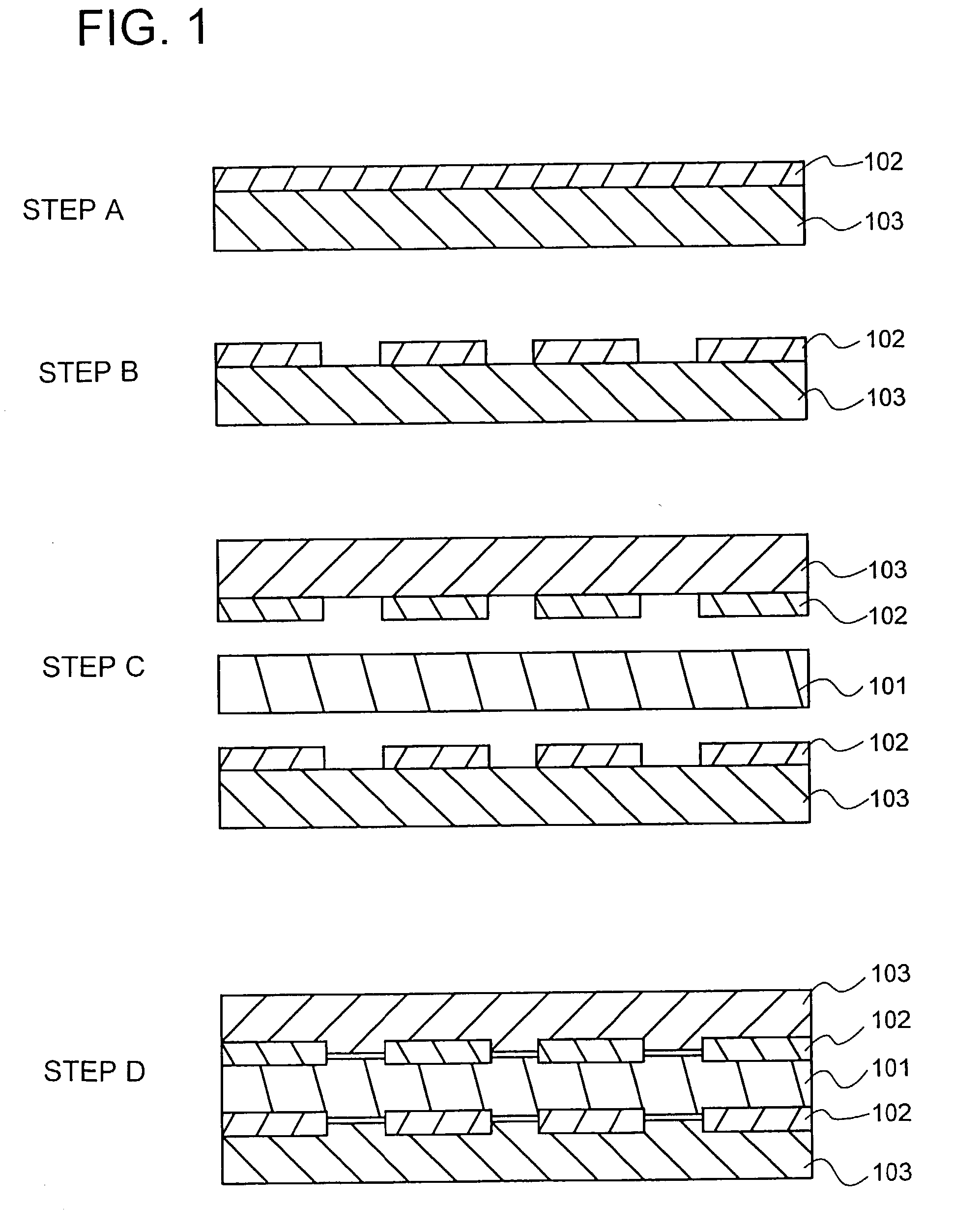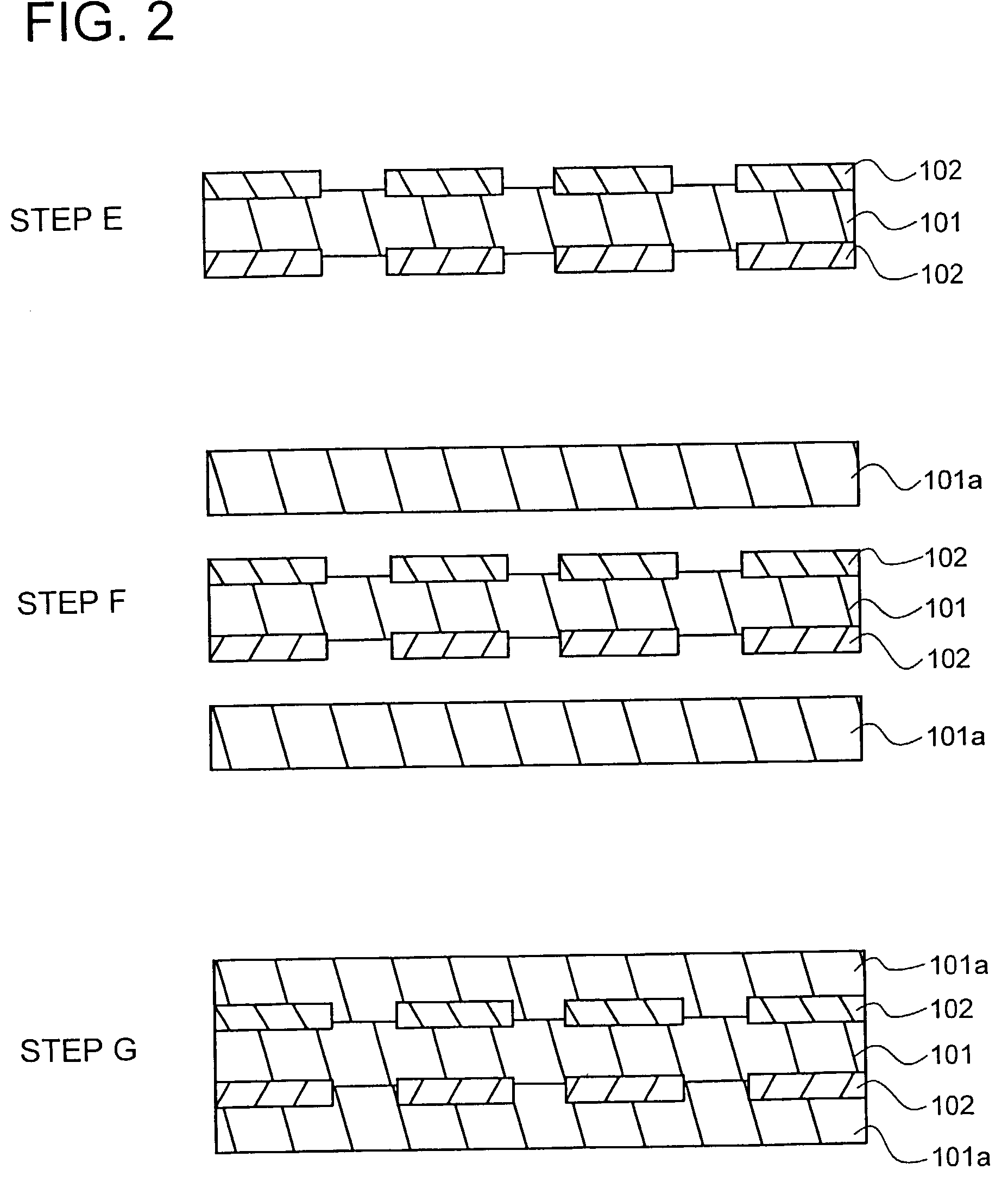Method for producing multilayer substrate and electronic part, and multilayer electronic part
a technology of electronic parts and substrates, applied in the direction of conductive pattern formation, fixed capacitors, stacked capacitors, etc., can solve the problems of reducing the thickness of the substra
- Summary
- Abstract
- Description
- Claims
- Application Information
AI Technical Summary
Benefits of technology
Problems solved by technology
Method used
Image
Examples
example 1
[0190] First, a sheet (prepreg) including no glass cloth was produced. A polyvinylbenzyl resin was used for the starting material, and the a mixture of the dielectric powder (68.45 g) and the resin (31.55 g) was blended in a ball mill. In this step, a coupling agent (a silane coupling agent) was also added by integral blending method.
[0191] The resulting slurry was made into a prepreg of 40 .mu.m thick with no glass cloth by using a doctor blade.
[0192] Next a copper foil of 18 .mu.m thick was adhered to a transfer film. A thermal release sheet (product name, Revalpha) manufactured by Nitto Denko (a polyester supporting layer with a thickness of 100 .mu.m; adhesive layer with a thickness of 45 .mu.m) was used for the transfer film. Adhesive strength of the thermal release sheet was 4.9 N / 20 mm, and a pressure of 1 kg / mm was applied in the adhesion.
[0193] Next, a predetermined pattern was formed on the copper foil side of the prepreg by means of photolithography by immersing the prepr...
example 2
[0198] The sheet including no glass sheet produced in Example 1 was used to produce a multilayer substrate.
[0199] The transfer film used was a thermal release sheet (Intelimer Warm-off Type manufactured by Nitta K.K. which is a polyester supporting layer having a thickness of 100 .mu.m having thereon an adhesive layer of about 25 to 30 .mu.m thick), and to this transfer film was adhered a copper foil having a thickness of 18 .mu.m. The adhesive strength of the thermal release sheet was 1.5 N / 25 mm, and attachment was conducted at a pressure of 1 kg / mm.sup.2.
[0200] Next, a predetermined pattern was formed on the surface of the copper foil-clad surface by means of photolithography by immersing in an etching solution containing ferric chloride (35% solution, temperature 40.degree. C.) for about 10 to 15 minutes. Since the step of etching was conducted by means of a photolithographic technique, a fine pattern in the order of about 30 to 36 .mu.m could be formed clearly.
[0201] Next, two ...
example 3
[0203] FIGS. 3 and 4 illustrate an inductor. FIG. 3 is a see-through perspective view and FIG. 4 is a cross-sectional view.
[0204] In FIGS. 3 and 4, the inductor 10 includes constituent layers (prepregs or substrates) 10a to 10e of the resin materials of the invention, inner conductors (coil patterns) 13 formed on the constituent layers 10b to 10e, and via holes 14 for providing electrical connection to the inner conductors 13. Via holes 14 can be formed by drilling, laser machining, etching or the like. The ends of each coil formed are connected to through-vias 12 formed along end surfaces of the inductor 10 and land patterns 11 formed slightly above or below the through-vias 12. Through-via 12 has a half-cut structure by dicing or V-cutting. This is because when a plurality of devices are formed in a collective substrate which is eventually cut into discrete pieces along lines at the centers of through-vias 12.
[0205] At least one of the constituent layers 10a to 10e of the inductor...
PUM
| Property | Measurement | Unit |
|---|---|---|
| Pressure | aaaaa | aaaaa |
| Angle | aaaaa | aaaaa |
| Angle | aaaaa | aaaaa |
Abstract
Description
Claims
Application Information
 Login to View More
Login to View More - R&D
- Intellectual Property
- Life Sciences
- Materials
- Tech Scout
- Unparalleled Data Quality
- Higher Quality Content
- 60% Fewer Hallucinations
Browse by: Latest US Patents, China's latest patents, Technical Efficacy Thesaurus, Application Domain, Technology Topic, Popular Technical Reports.
© 2025 PatSnap. All rights reserved.Legal|Privacy policy|Modern Slavery Act Transparency Statement|Sitemap|About US| Contact US: help@patsnap.com



